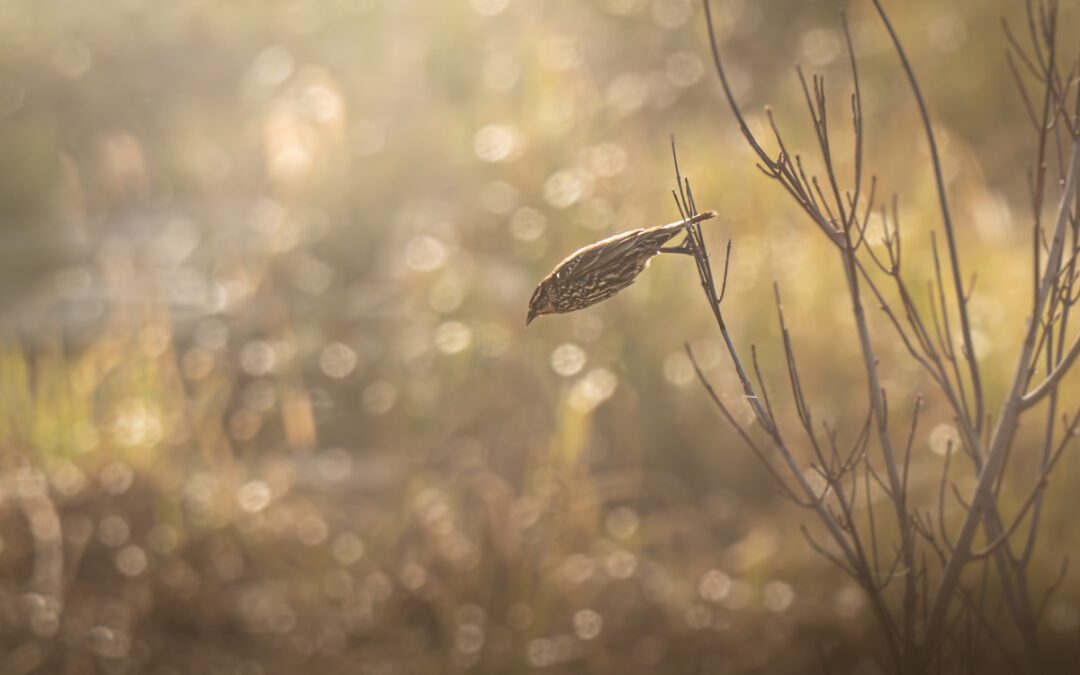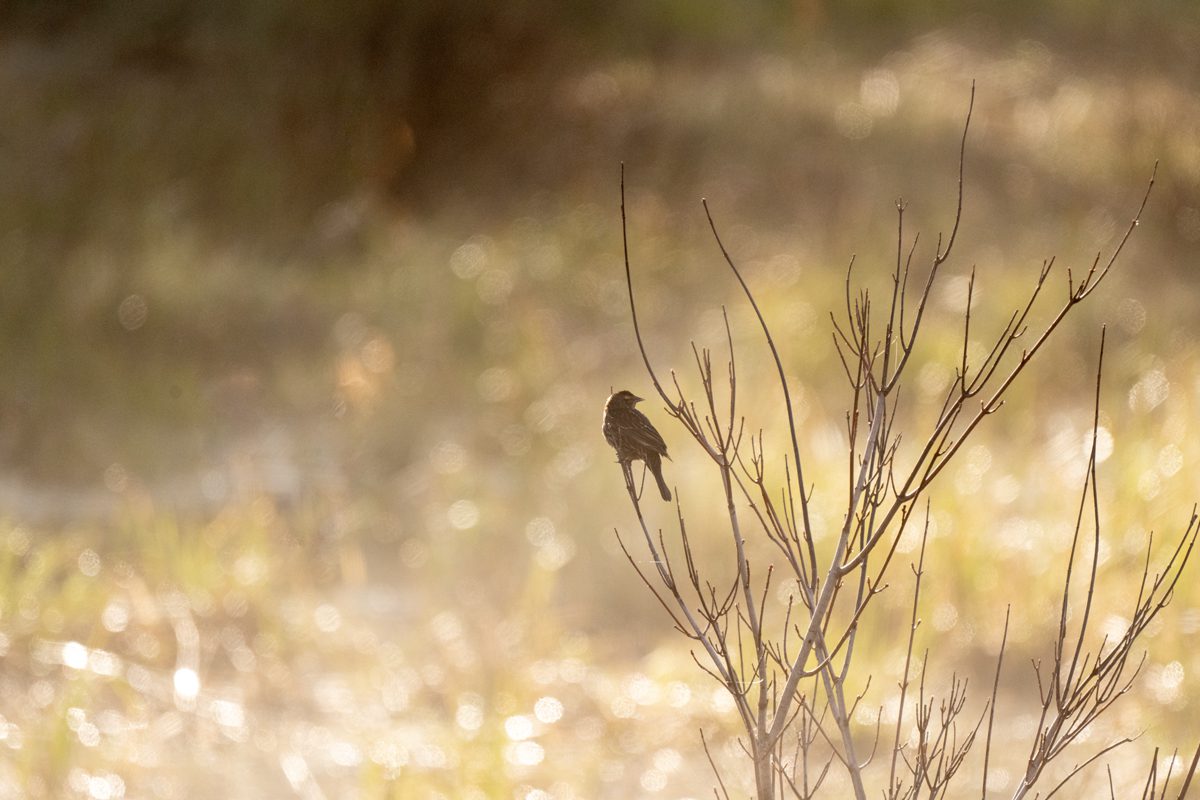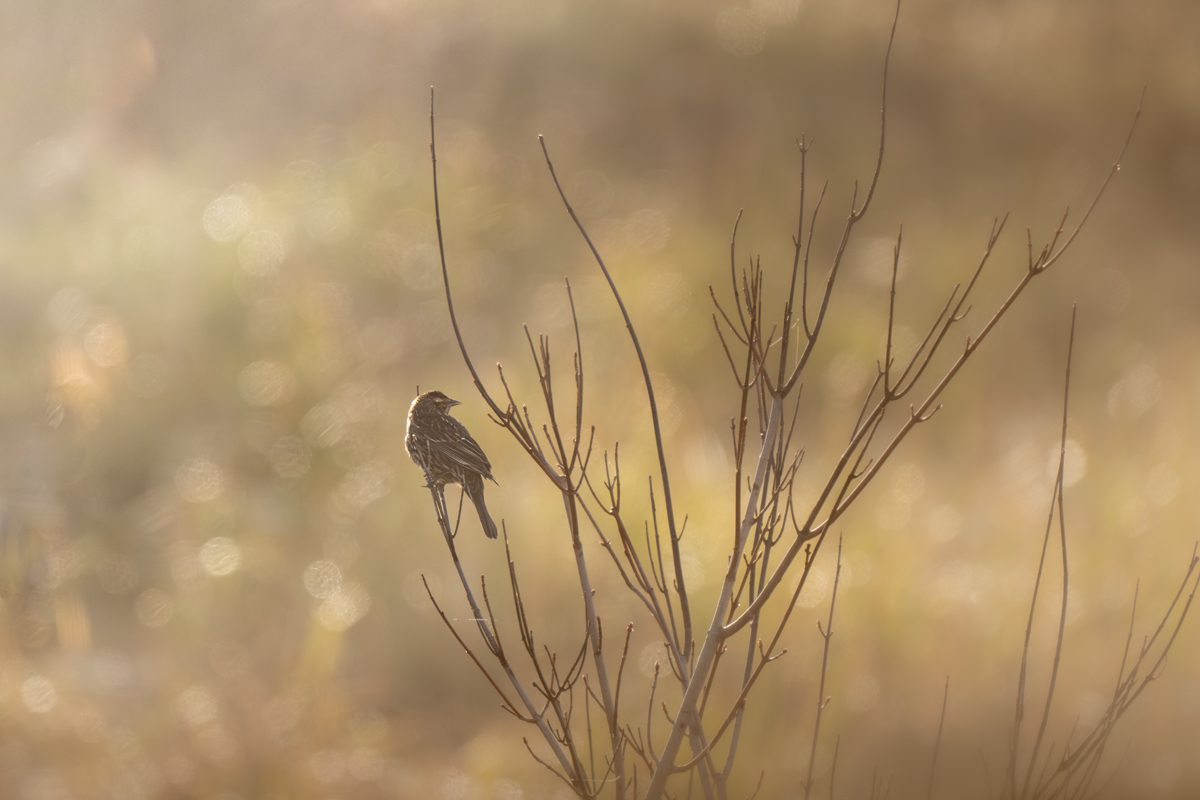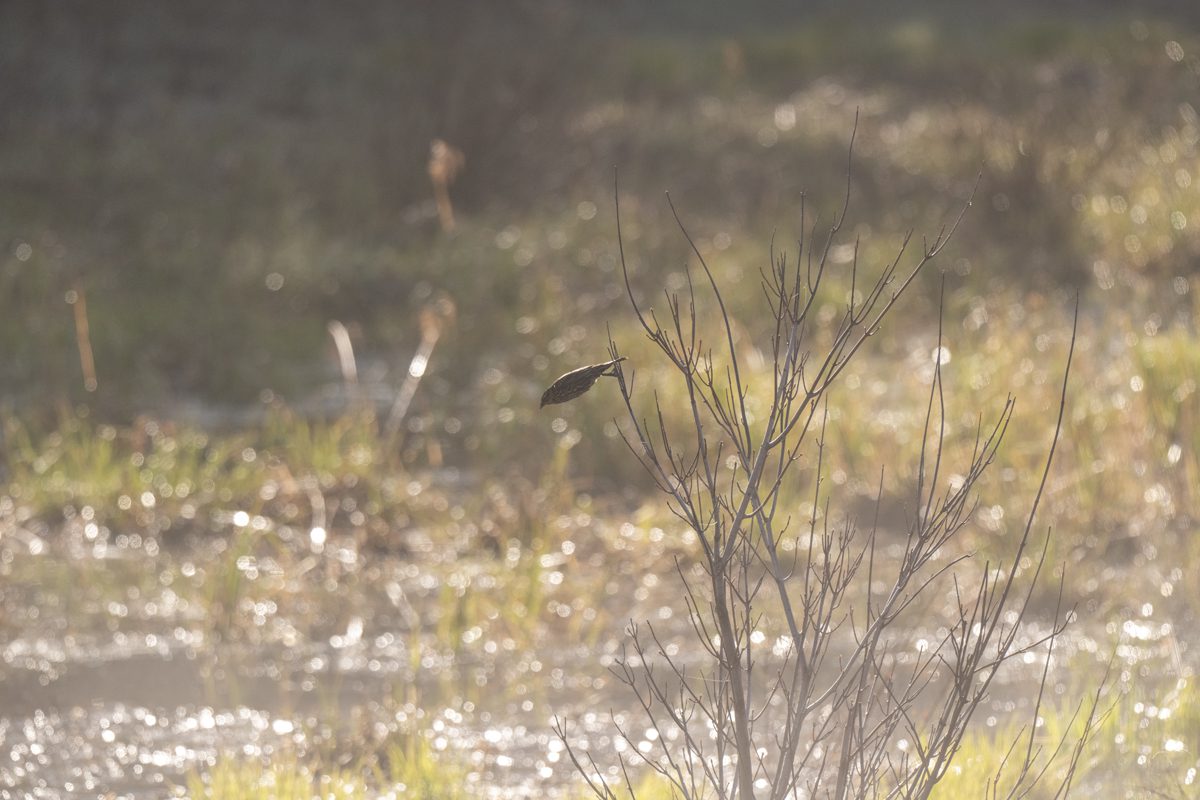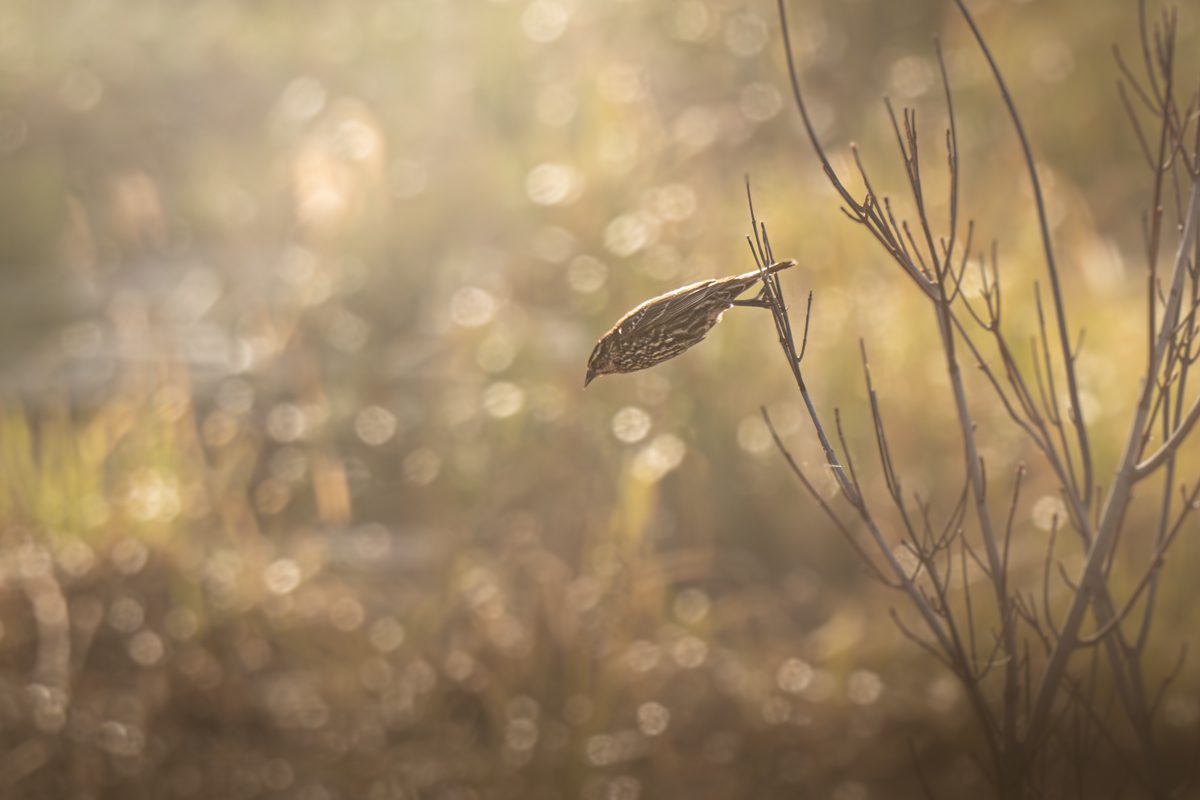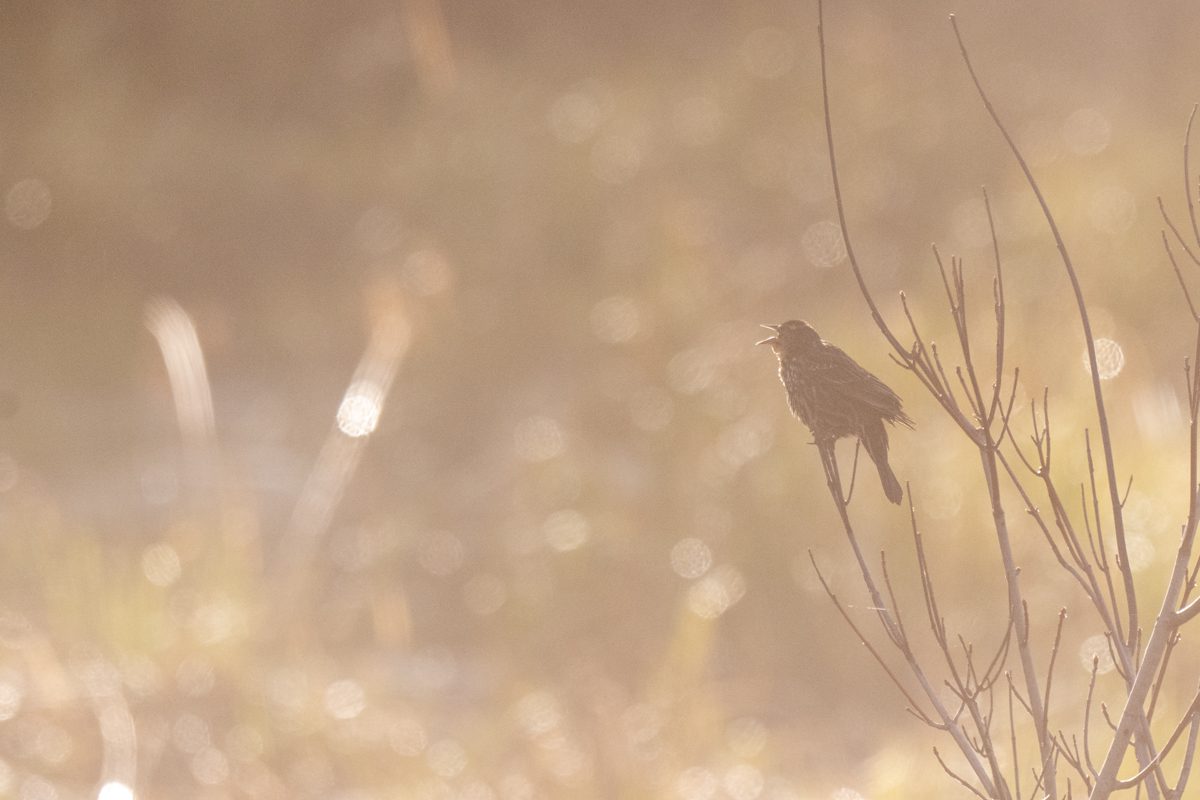Spring has finally arrived in New Hampshire, and with it, a fresh sense of renewal. As a nature and wildlife photographer, this time of year when all the birds start to return. The weather is unpredictable, shifting between fog, rain, and the occasional burst of sunshine, all of which provide perfect opportunities for capturing the essence of the changing seasons. I’ve been out at sunrise and sunset, embracing every moment—whether it’s snowing, raining, or that perfect misty fog that rolls in during the early mornings. I am learning to edit wildlife. Check out this before and after.
This morning, I decided to revisit a spot that’s been on my mind for a while now: a swamp not far from home where I’ve seen Red-winged Blackbirds. It’s a spot I know well, and every time I visit, I go with a specific goal in mind. This time, though, I learned a few valuable lessons about wildlife photography, especially when it comes to getting close, shooting at the right time, and learning from my mistakes.
The Red-winged Blackbirds: A Challenge
The plan was simple enough: I wanted to photograph the Red-winged Blackbirds in the fog, with the hope of backlighting them in a way that would capture the misty breath coming out of their mouths. This kind of shot requires a cold morning, the kind where you can see your own breath in the air. These birds are often found in swampy areas, perched on tall grasses, creating the perfect opportunity for me to capture their behavior against a natural backdrop of fog and mist.
I’ve been to this swamp a few times now, each visit a learning experience. But today, the conditions were nearly perfect: thick fog, the sun beginning to rise, and a chill in the air. I spotted the Red-winged Blackbirds almost immediately—plenty of them. The problem, however, was that they were just too far away and it wasn’t cold enough.
As a newbie to wildlife photography, I don’t have the luxury of getting perfect shots right off the bat, but I’ve learned to take what I can get. These two were too far away and also had branches in front of them. I still really like the shots, but not what I envisioned. I will have to try again.
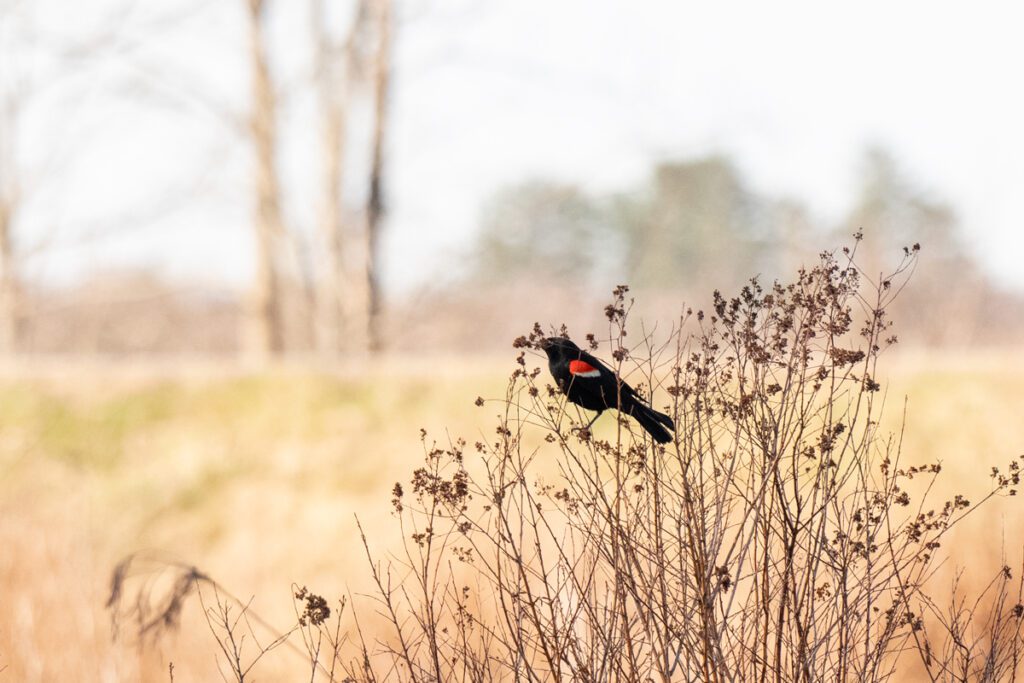
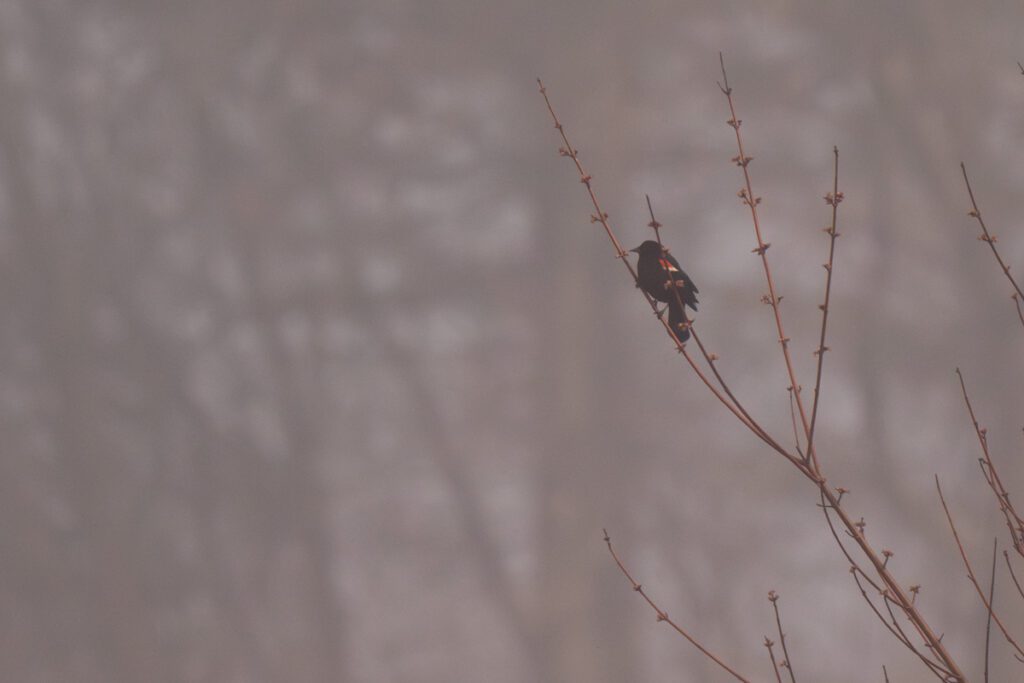
Photographing other birds
Just as I was about to pack it in and head home, I noticed something else. There was another bird, one I didn’t recognize, but it was much closer. The fog seemed to have parted slightly, allowing me to get a better angle. This bird, though not the one I was after, gave me the opportunity to practice my skills. It was getting a bit too late and full sun was out but I still managed to get some interesting shots and great practice.
I started snapping pictures of this new subject—still working with my primary goal of capturing sharp, clean shots—but also just being in the moment and taking whatever I could. The bird was lively, moving around, and I was able to get a few action shots. I was so focused on the moment that I didn’t realize how much I was improving my technique.
As I edited the images later, I felt a sense of accomplishment. Sure, they weren’t the perfect Red-winged Blackbird shots I had hoped for, but they were something I could work with. And with each photo, I could see myself improving—understanding the nuances of lighting, the importance of timing, and the value of patience.
Check out this edit, before and after.
The Early Morning Limitations
After a few hours of shooting and editing, I had a revelation: Early spring mornings are all about timing. The light changes quickly, and by 8 a.m., the photos just don’t come out the way I want them to. The fog is gone, the lighting is harsher, and the soft, milky quality that I love in my images is lost. I’ve learned this lesson the hard way today. I was totally positioned wrong. I need to be down at their level with overcast or backlight. Reflection off the water was not ideal.
The perfect conditions for the type of nature photography I enjoy—those milky backgrounds, dew-laden plants, and mist-filled landscapes—require an early start and a cold, still morning. Once the sun rises too high, the light is too strong, and it overpowers the subtle beauty I’m trying to capture. I discovered that by 8 a.m. in the spring, I won’t get the results I want.
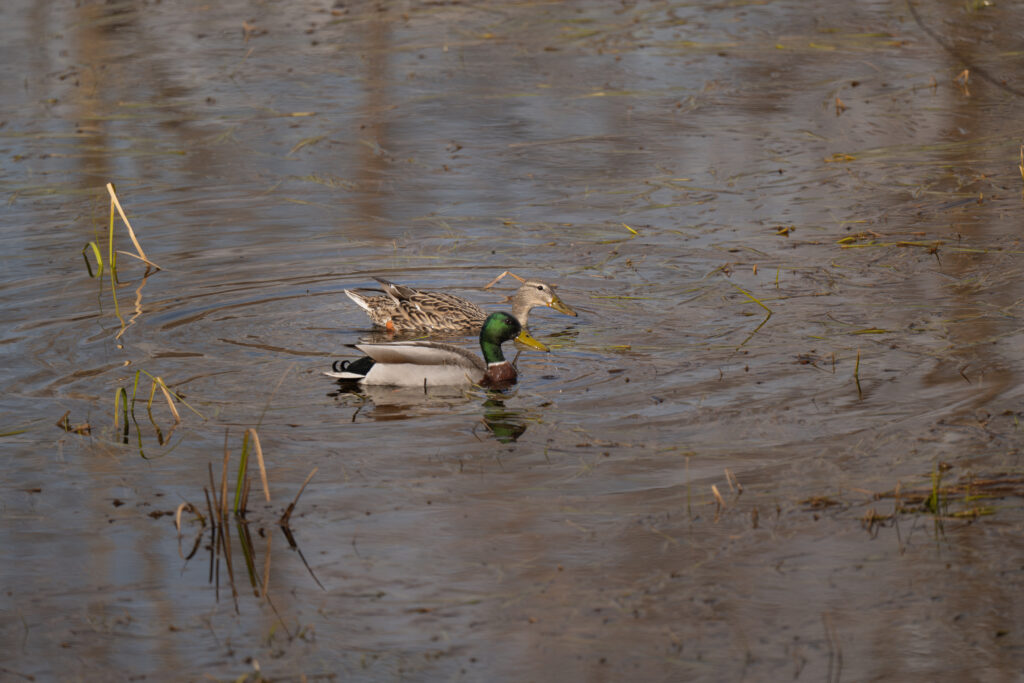

Reflecting on the Journey
It’s not just about the perfect shot, although that’s always the goal. It’s about the lessons learned from every mistake and every small victory. Today, I didn’t get the shot I set out for, but I got better. I learned more about my gear, my editing process, and my ability to adapt to the ever-changing environment of the wild.
The more I shoot, the more I realize that wildlife photography is a constant balance between patience, timing, and luck. Sometimes, you don’t get the shot you were hoping for. But sometimes, a new subject appears, and you end up capturing something unexpected.
As I continue to learn and grow in this field, my goals remain the same: sharp, beautiful wildlife photos with soft, dreamy backgrounds, misty landscapes, and that magical moment when everything aligns. Whether I’m shooting at sunrise, through the fog, or capturing the beauty of a dew-covered plant, every day is a new opportunity to capture the fleeting beauty of nature.
And so, I’ll continue to set my alarm for those early mornings, even if I don’t always get the perfect shot. Because in the end, it’s all about being out there, experiencing the world through my lens, and sharing that experience with others.
Stay tuned for more updates on my journey as I continue to learn, grow, and explore the world of wildlife photography.
Check out this before and after.
These photos are not available for sale, but you can find my curated work available for a limited time in the store.
